#Is DevOps Software Engineering
Explore tagged Tumblr posts
Text
Are DevOps Engineers Software Engineers? Understanding the Roles and Differences- OpsNexa!
Explore the similarities and differences between DevOps engineers and software engineers. Are DevOps Engineers Software Engineers? Learn about their unique roles in the software development lifecycle, the skills required for each, and how they collaborate to deliver high-quality software.
#DevOps vs Software Engineer#DevOps Engineer Role#DevOps Career Path#DevOps and Software Development#Is DevOps Software Engineering
0 notes
Text



I found myself surrounded by companions daring to tackle a real software architecture challenge. We shared a good wine and cheese to conquer it together! (Unfortunately, there’s always something waiting to be dealt with on Monday.)
The glow of my Neovim terminal in Monokai theme reflects my rhythm — a guy who doesn’t stop on weekends but knows that balance isn’t about being all-in, all day.
The setup screams character: a seamless fusion of productivity and comfort. Lazygit commands at my fingertips, a Ghibli-esque avatar paired with Neofetch adding a touch of Tumblr aesthetic, and a playlist of Korean indie OSTs playing in the background to add depth to every keystroke.
This is how I drive — in code, creativity, and moments that are unapologetically mine.
#study blog#study aesthetic#studyblr#programmer#software development#student#studyblr community#studyblr europe#studyblr aesthetic#dark academia#dark aesthetic#night sky#student life#student university#developer#coding#programming#software#softwareengineering#software engineer#software engineering#software developers#devops#studyblr brazil#studies#study inspiration#study spot#self improvement#aesthetic
60 notes
·
View notes
Text
The more coding and IT stuff you do it, the more you learn, the more you learn the more you realise how much you don’t know.
110 notes
·
View notes
Text
The developers i work with are asking chatgpt questions about my infrastructure that are in our docs. Unsurprisingly they are getting bad advice for our particular setup, and are bothering my team with a bunch of questions about if the advice is right and what would happen if they ran those commands.
41 notes
·
View notes
Text
SPARK TECHNOLOGIES
We deliver value by identifying opportunities that align with business objectives and adopting an agile approach to implement them.
#Web developement#Software testing#Devops & Engineering#Salesforce#Mobile Application Developmen#Data Analytics#IT Consulting#IT Outsourcing#Web Design#Content Management System#Digital Marketing
2 notes
·
View notes
Text
Leading the Way in IT- ChatGPT's Transformative Impact
In the dynamic world of Information Technology, a transformative force is reshaping the field: ChatGPT. This advanced AI, built on the sophisticated GPT-3.5 framework, is not just a revolutionary tool but a catalyst for unprecedented innovation, efficiency, and enhanced human-AI collaboration.

The ChatGPT Edge With its deep understanding of context, nuanced responses, and adaptive learning, ChatGPT stands as a groundbreaking advancement in natural language processing. It's a boon for IT professionals, enabling them to tackle complex problems, improve team communication, and offer solutions tailored to the unique challenges of the IT realm. Revolutionizing DevOps Communication ChatGPT marks a significant leap in DevOps, facilitating smoother communication and collaboration. It excels in interpreting natural language, allowing real-time issue resolution, task automation, and fostering a culture of continuous improvement. DevOps teams can leverage ChatGPT for enhanced decision-making and adaptability in the ever-changing landscape of software development. Enhancing Product Development Cycles In product development, ChatGPT's contribution is invaluable. It streamlines the lifecycle by grasping complex requirements and generating structured specifications. Teams can use ChatGPT to refine ideas rapidly, leading to more effective development processes and innovative solutions that align with user expectations. Advancing Mobile and Web Application Development For web and mobile app developers, ChatGPT accelerates the coding process. Its ability to understand context and generate code quickens development cycles. Integrating ChatGPT into workflows helps tackle coding challenges, troubleshoot, and enhance code quality, resulting in a more agile and responsive development process. The Future of IT with ChatGPT Looking ahead, ChatGPT's role in IT is poised to expand significantly. This fusion of conversational AI and technical acumen will revolutionize collaboration and innovation across DevOps, product development, and app development. ChatGPT is set to be a key driver in creating an adaptable, efficient, and collaborative IT ecosystem.
ChatGPT is guiding the IT industry towards an era where efficiency and collaboration take center stage. As organizations adopt this transformative technology, the sectors of DevOps, product development, and app development are on the cusp of a major evolution. Embrace ChatGPT as it leads the charge in IT innovation, where efficiency meets creativity in the digital world.
#devops#product engineering#information technology#software development#product development#upperthrusttechnologies#chatgpt#ai tools#ai technology#openai
2 notes
·
View notes
Text
AI is transforming how we build software, but it also brings unique risks. This follow-up explores real challenges companies face when integrating AI across the SDLC, with phase-by-phase best practices for responsible, secure, and ethical adoption. Discover how to balance innovation and caution to build smarter, safer software.
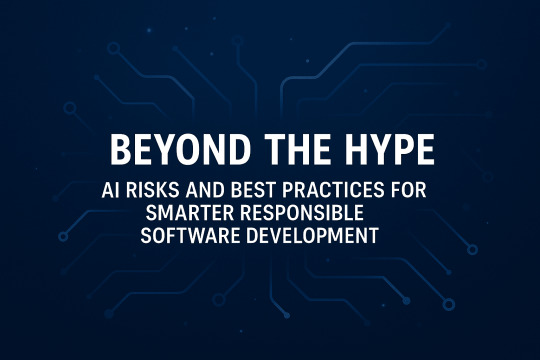
View On WordPress
#AI#AI challenges#Artificial Intelligence#Coding Phase#Continuous Operations#Detailed Design#DevOps#SDLC#Software Analysis#Software Architecture#Software Construction#Software Deployment#Software Design#Software Development#Software Development Life Cycle#Software Development Process#Software Engineering#Software Maintenance#Software Retirement#Software Testing
0 notes
Text
Product Engineering Services for Modern Software Solutions
Modern software solutions take a comprehensive approach to designing, developing, testing, and maintaining software products throughout their lifecycle. This covers everything from initial product ideation and strategy to post-launch support and ongoing improvements. A product engineering services company plays a vital role in this process, assisting businesses in developing robust, scalable, and user-friendly software that meets market demands and user needs. Innovation is now necessary and no longer optional.
That’s where product engineering services play a transformative role. By bridging the gap between idea and execution, these services enable organizations to launch, scale, and maintain robust software solutions in a competitive landscape. From startups aiming to disrupt markets to enterprises modernizing legacy systems, the demand for intelligent, scalable, and agile software continues to grow rapidly. Fortunately, with the right approach to product engineering, even complex ideas can be transformed into high-performing digital products.
Importance of Product Engineering for Modern Software Solutions
To begin with, product engineering services cover the entire lifecycle of a software product, from ideas and design to development, testing, deployment, and maintenance. This comprehensive approach ensures that products are not only functional and user-friendly but also scalable and ready for the future.
Moreover, these services are typically offered by specialized teams with diverse skills, allowing for agile practices, rapid prototyping, and quicker time-to-market. Whether it’s mobile apps, SaaS platforms, enterprise tools, or IoT systems, product engineering plays a vital role in building the digital foundation of modern businesses………….
#product engineering services#software product development#digital product engineering#agile product engineering#scalable software solutions#software lifecycle management#product innovation strategy#cloud-native development#DevOps integration#modern software architecture
0 notes
Text
IT Staff Augmentation Services | Staff Augmentation Company
In today’s fast-paced digital world, technology evolves rapidly—and so does the need for top IT talent. Companies are constantly seeking efficient, scalable, and cost-effective ways to expand their tech teams without bearing the long-term burden of hiring full-time employees. This is where IT staff augmentation services come into play.
At Versatile IT Solutions, we offer flexible and customized IT staff augmentation to meet your short-term or long-term project demands. With over 12+ years of industry experience, we help companies of all sizes find the right talent, fast—without compromising quality.
What Is IT Staff Augmentation?
IT Staff Augmentation is a strategic outsourcing model that allows you to hire skilled tech professionals on-demand to fill temporary or project-based roles within your organization. This model helps bridge skill gaps, scale teams quickly, and improve operational efficiency without the complexities of permanent hiring.
Whether you need software developers, QA engineers, UI/UX designers, DevOps experts, or cloud specialists, Versatile IT Solutions has a ready pool of vetted professionals to meet your unique business needs.
Why Choose Versatile IT Solutions?
Versatile IT Solutions stands out as a reliable staff augmentation company because of our deep understanding of technology, rapid talent deployment capabilities, and commitment to quality.
✅ Key Highlights:
12+ Years of Experience in IT consulting and workforce solutions
300+ Successful Client Engagements across the USA, UK, UAE, and India
Pre-vetted Tech Talent in various domains and technologies
Flexible Engagement Models: Hourly, monthly, or project-based
Fast Onboarding & Deployment within 24–72 hours
Compliance-Ready staffing for international standards
We don’t just provide resumes—we deliver professionals who are culture-fit, project-ready, and aligned with your objectives.
Our IT Staff Augmentation Services
We offer comprehensive staff augmentation solutions that allow companies to hire qualified IT professionals on demand. Some of our key offerings include:
1. Contract Developers
Hire experienced developers skilled in technologies like Java, Python, PHP, Node.js, React, Angular, and more to strengthen your software development lifecycle.
2. Dedicated Project Teams
Get entire project teams—including developers, testers, designers, and project managers—for end-to-end execution.
3. Cloud & DevOps Engineers
Need help with infrastructure or deployment? Augment your IT team with certified AWS, Azure, or Google Cloud professionals.
4. QA & Automation Testing Experts
Our testing professionals ensure product reliability with both manual and automated testing capabilities.
5. UI/UX Designers
Enhance your product’s user experience with creative UI/UX professionals skilled in tools like Figma, Sketch, and Adobe XD.
6. ERP & CRM Specialists
Staff your enterprise solutions with SAP, Salesforce, and Microsoft Dynamics experts.
Technologies We Support
We cater to a wide array of platforms and technologies:
Front-End: React.js, Angular, Vue.js
Back-End: Node.js, .NET, Java, Python, PHP
Mobile: Android, iOS, Flutter, React Native
Cloud: AWS, Azure, GCP
DevOps: Docker, Kubernetes, Jenkins, Ansible
Database: MySQL, MongoDB, PostgreSQL, Oracle
ERP/CRM: SAP, Salesforce, Microsoft Dynamics
Engagement Models
We offer flexibility with our hiring models to best suit your project and budget requirements:
Hourly Basis – Ideal for short-term needs
Monthly Contracts – Great for ongoing or long-term projects
Dedicated Teams – For businesses needing focused delivery from a committed team
Whether you want to scale up quickly for a new project or need niche expertise to complement your internal team, our adaptable models ensure smooth onboarding and integration.
Benefits of IT Staff Augmentation
Hiring through a trusted staff augmentation partner like Versatile IT Solutions comes with numerous advantages:
🔹 Cost-Effective Resource Allocation
🔹 No Long-Term Hiring Commitments
🔹 Access to Global Talent Pool
🔹 Faster Time-to-Market
🔹 Reduced Overhead Costs
🔹 Control Over Project Workflow
Instead of spending months on hiring and training, you can deploy top tech talent within days and keep your business moving forward.
Client Success Story
“We needed a team of skilled backend developers for a critical fintech project. Versatile delivered high-quality professionals within a week. They were proactive, collaborative, and technically strong.” — CTO, US-Based Fintech Company
“Thanks to Versatile's staff augmentation services, we were able to reduce our time to market by 40%. Their resources seamlessly integrated with our in-house team.” — Head of Product, SaaS Startup
Ready to Augment Your IT Team?
If you're struggling with hiring delays, talent shortages, or capacity issues, Versatile IT Solutions is here to help. We offer customized IT staff augmentation services that let you scale smarter, faster, and more efficiently.
📌 Explore our Staff Augmentation Services 📌 Need expert advice or want to get started?
#IT Staff Augmentation#Tech Talent Hiring#Software Developers#Dedicated Teams#Versatile IT Solutions#Resource Augmentation#Remote Developers#DevOps Engineers
0 notes
Text
Platform Engineering Vs Devops: Difference In 2025
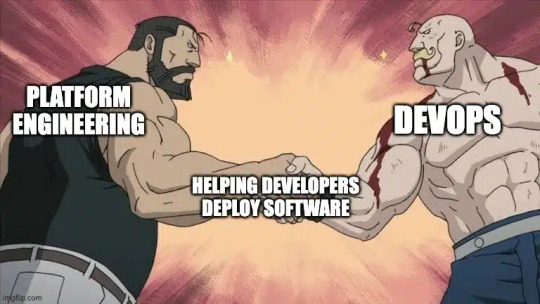
Let’s start with DevOps, the buzzword that changed how we think about building and shipping software. These days, every college student and other professional wants to become a DevOps engineer. If you are an aspiring DevOps engineer or already working as a DevOps engineer, this blog will help you understand the difference between Platform engineering and Devops
Platform engineering is really changing every company’s perspective on developing platforms. These days, every company has started building its own internal developer platform (IDP). Let’s see why platform engineering is so important and whether platform engineering is replacing DevOps.
What is DevOps?
If you see the definition of DevOps online, this is what you get to see:
“DevOps is the combination of cultural philosophies, practices, and tools that increases an organization’s ability to deliver applications and services at high velocity.”
The goal? To shorten the software development life cycle and deliver high-quality software quickly and reliably. It’s all about collaboration, automation, and breaking down silos between teams.
But DevOps isn’t just about tools. It’s about people working together, sharing responsibility for building, testing, and releasing code. Think of it as a bridge that connects development and operations, powered by automation and transparency.
Now let’s come to our hero.

What is Platform Engineering?
Platform engineering focuses on designing, building, and maintaining the internal platforms that software teams use to build, test, deploy, and operate applications. These platforms aim to make developers’ lives easier by providing self-service tools, infrastructure as code, automation, and standardized processes.
If DevOps is the bridge, platform engineering is like building a really smart highway system on top of it.
Imagine you’re a developer. Instead of dealing with infrastructure headaches every time you want to deploy something, a platform engineer has already built you a “golden path”—a toolkit that lets you focus on your code and ship it faster (and safer).
For example, if you are a developer who needs access to a K8s cluster, instead of waiting for DevOps team or your manager to give you access, imagine if there is a platform (Internal Developer platform) where you can self-provision everything without needing to wait for anyone. How cool is this, right?
How are Platform Engineering and DevOps Different?
At a first glance, DevOps and platform engineering can look pretty similar—they both want to speed up delivery, improve collaboration, and automate all the things. But here’s the big difference:
DevOps is a set of practices and a cultural movement. It encourages developers and operations to work together, adopt automation, and own the entire lifecycle.
Platform Engineering is about productizing infrastructure and tooling. Platform engineers build the reusable platforms, paved roads, and self-service portals that enable DevOps to scale across a company.
How to Get Started with DevOps?
To be honest, the answer will differ. From a company perspective, they may already be implementing DevOps and have DevOps engineers in place. But if you are someone new to DevOps and want to start learning, here’s how you can begin:
First, start with containers and try to containerize your application. Once you are familiar with containerization technology, learn CI/CD. Then, start using any of the popular cloud platforms to deploy your application. Finally, explore Kubernetes. These are tools in DevOps, but you don’t need to learn every tool—focus on learning the technology behind them.
For example, learn containerization technology first before diving into Docker or Podman. The same applies to all tools: understand the underlying technology first, then use the tools.
How to Get Started with Platform Engineering?
I know everyone has this question: How do I get started with Platform Engineering? My first recommendation is to use tools that provide platforms or help in building platforms. This will give you a better understanding of how platform engineering works. Learning theory, like reading this blog, is fine, but try using tools that are useful for building platforms. There are many tools on the market, like Backstage, and the most popular tool I would recommend is Crossplane. Use these tools and then analyze how they can be used to build platforms that solve the internal issues developers are currently facing.
Also, join the Platform Engineering community. The CNCF has a dedicated working group for Platform Engineering. You can join the community and learn how others are building platforms.
How to Implement DevOps
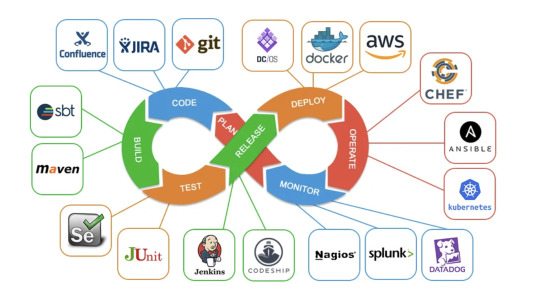
How to Implement Platform Engineering
Understand Developer Needs: Interview your dev teams. What slows them down? What do they need to move faster?
Design for Self-Service: Build tools and platforms that let developers help themselves.
Standardize and Automate: Use Infrastructure as Code (IaC), CI/CD pipelines, and reusable modules.
Feedback Loop: Keep talking to your users (the devs) and keep improving the platform.
Measure Success: Track adoption, developer satisfaction, and the time it takes to deliver features.
Is Platform Engineering Replacing DevOps?

It’s a question a lot of people are asking as platform engineering gains popularity: Is platform engineering replacing DevOps?
The short answer is no platform engineering is not replacing DevOps. Instead, it’s building on the foundation that DevOps created.
DevOps introduced the world to better collaboration, automation, and a culture of shared responsibility between development and operations. Platform engineering takes these ideas a step further by creating internal platforms and tools that make it easier for teams to practice DevOps at scale.
Think of it like this:
DevOps is about changing how teams work together and automate software delivery.
Platform engineering is about building what teams use internal products, self-service tools, and reusable systems that support DevOps practices.
In fact, platform engineering and DevOps go hand in hand. Platform engineering empowers DevOps teams to work more efficiently and consistently, while DevOps culture ensures that platforms are used and improved collaboratively. Rather than a replacement, platform engineering is the next evolution that helps organizations get even more value out of DevOps.
Integrate Keploy into Your CI/CD Pipeline for Continuous Testing
In a typical CI/CD pipeline, I’m sure everyone has integrated some static tools and security tools. But what if there's something we can add for testing? Yes, you can add Keploy to your CI/CD pipeline so that testing becomes a part of it. This way, every time you make changes, testing is included, and you can identify bugs and confirm if any new regressions have been introduced.
No matter where your CI/CD pipeline is whether it’s in GitHub, GitLab, or Jenkins you can run Keploy.
To learn more about Keploy integration with GitHub: https://keploy.io/docs/ci-cd/github/
To learn more about Keploy integration with Gitlab: https://keploy.io/docs/ci-cd/gitlab/
To learn more about Keploy integration with Jenkins: https://keploy.io/docs/ci-cd/jenkins/
Benefits of DevOps
Faster releases: Automate everything from builds to deployment.
Better collaboration: No more “throwing code over the wall.”
Higher reliability: Automated tests and monitoring catch issues earlier.
Continuous improvement: Feedback loops make processes better over time.
More fun at work: Developers and ops feel like they’re on the same team.
Benefits of Platform Engineering
Self-service: Developers don’t have to wait for ops to provision resources.
Consistency: Standardized tools and processes across teams.
Scalability: Easy to grow as your organization grows.
Happier developers: Less time fighting with infrastructure, more time coding.
Security and compliance: Built-in guardrails keep your cloud safe.
Conclusion:
I hope you had some insight on platform engineering and DevOps. I guess DevOps people already know and have used DevOps, but platform engineering is something new to many people. Many organizations have started investing in platform engineering, so it is good to know about these concepts. More importantly, if you are a DevOps engineer, start investing in yourself on platform engineering. Build some simple platforms, do POCs, and then you will understand the importance of platform engineering and how it will improve your team’s productivity.
FAQs:
1. Can you have DevOps without platform engineering? Yes DevOps can work with manual processes or basic automation, but it scales better with a strong platform.
2. Does platform engineering replace DevOps? No. Platform engineering empowers DevOps by providing better tools and reusable infrastructure.
3. Is platform engineering only for big companies? No. Even small teams can benefit from simple platforms, especially as they grow.
4. What skills do platform engineers need? Cloud, automation, programming, CI/CD, and empathy for developers’ pain points.
5. Which roles should own developer experience—DevOps or platform engineering? Both have a stake, but platform engineers are increasingly focused on developer experience as their main product.
0 notes
Text
We Ditched Manual Deploys and Never Looked Back: A DevOps Tale
0 notes
Text
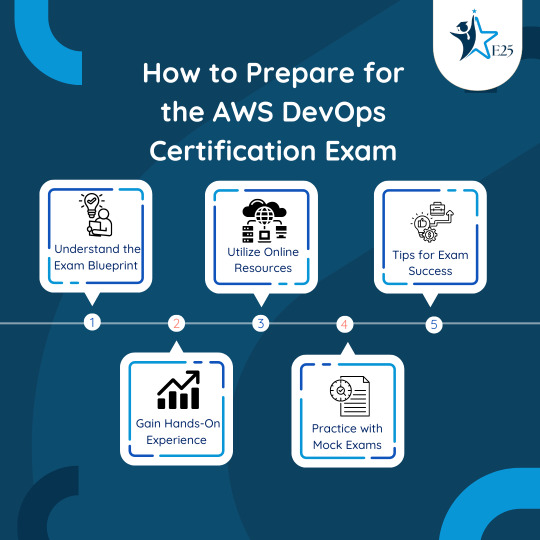
Skills You Learn Through AWS DevOps Certification
CI/CD Implementation
Learn to build and control continuous integration and delivery pipelines using AWS offerings like CodePipeline, CodeBuild, and CodeDeploy.
#Skills You Learn Through AWS DevOps Certification#devops#tech#technology#education#programming#software engineering
0 notes
Text
How to Become a Farmer 🧑🌾
00. Learn Python 01. Write code day and night 02. Become a senior developer 03. Burn out solving problems 04. Finally had enough of this. Quit. 05. Become a farmer. Work with trees and animals and grow crops.
46 notes
·
View notes
Text
New bug fixes and features - Q1 2025
The Screwdriver team is pleased to announce our newest release which brings in new features and bug fixes across various components.
New Features
UI
The new Pipeline landing page is now generally available. Once users opt in, they will be redirected to the new experience.

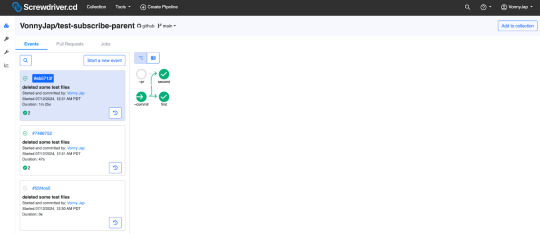
The expand and collapse feature has been added to pipeline stages. The stage's completion status is now reflected in its border.


The display of multiple banners has been modified from a stacked format to a paginated layout


API
Relax permission check to allow admins from other SCMs to update pipeline
Added APIs to create and delete buildCluster annotations, enabling Screwdriver admins to move jobs to specific clusters
New endpoint to update buildcluster of a pipeline
Improve pipeline searches by adding the 'scmUri' query parameter
Introduced a 'not equal' filter for pipeline events creator in the pipeline events list API
Changes to banner to include scope and scopeId
Bug Fixes
UI
Pipeline header updating issue resolved by adding necessary tracking to the pipeline header component, allowing proper updates when a pipeline changes, see PR
Pipeline root directory now included and displayed with branch name in new landing page, with additional CSS styling cleanup, see PR
Corrected the aggressive logic in the new landing page that was preventing jobs included in a stage from being started/restarted, now allowing these jobs to be started/restarted as needed, see PR
Fixed missing stages border when accessing pipeline from Collection by directly requesting stage data from the backend, see PR
Enhanced UI consistency by applying standardized CSS styling to the modal button within the build detail page, aligning it with the appearance of the workflow graph tooltip start modal, see PR
Ensured the start all children pipelines API call requests the entire error object, allowing more detailed analysis of the API call and returned status code, see PR
Fix: Remote trigger's pipeline name now uses 'remoteName' instead of 'displayName' to avoid confusion. See PR
Fix: Build status determination was updated by relaxing the build meta warning object check and included warning statuses in the event card warning count. See PR
Fix: The edges from stages to upstreams are now properly drawn by providing a solution for insufficient horizontal spacing between stages. See PR
Fix: The post body for PR events was improved by correctly including the job prefix in the `startFrom` value when restarting a PR job. See PR
Fix: Column name in event job display changed from 'HISTORY' to 'STATUS' for accuracy in new landing page. See PR
Fix: Long branch names on the search page are now truncated. See PR
Fix: API fetch updated to ignore scheduler events for configured pipeline. See PR
Fix: The new landing page now correctly reloads the workflow graph when starting a new event. See PR
Fix: Overflow handling for long messages added to prevent text overflow in event card. See PR
Fix: Pipeline data removed from route models due to direct injection into components. See PR
Fix: The maximum node depth issue was fixed, addressing problems with 0-based counted node depth and empty arrays for pipelines with detached jobs only. See PR
Fix: The creation of a sparse array with empty slots which caused downstream calculations to break was fixed. See PR
Fix: Parameters drop down issue resolved in new landing page by adjusting dropdown spacing and removing additional scroll logic. See PR
Fix: Build warning determination logic was fixed to correctly display warning status. See PR
Fix: Node depth calculation in workflow graph was improved by introducing 'Topological sort' for more accurate depth assignments. See PR
Fix: An issue preventing the use of anchor tags within the navigation banner was fixed. See PR
Fix: Job restart is now disabled for jobs with no builds in the new landing page. See PR
API
Upgrade of Node.js v22 and dependencies
Addressed a bug in build triggering in certain cases of restarts, ensuring the next build is correctly triggered from the latest child event, see PR
Fixed an issue where an external trigger couldn't trigger a pipeline stage due to a misinterpretation of the event associated with the pipeline the job belongs to, see PR
Avoided creation of empty events when changed file names match the source directory, see PR
ParentBuildId now set just before execution to ensure correct metadata capture from parent builds, especially when they finish simultaneously, see PR
Converted the 'isActive' parameter from string to boolean for MySQL on banner list endpoint to ensure proper banner list retrieval, see PR
Included a webhook executor to the admin group before retrieving the pipeline token. This resolved the 'Pipeline has no admin' error during the webhook process, see PR
The metadata from the job that directly precedes the virtual job is now prioritized over the event metadata, see PR
Proper handling of virtual jobs in remote triggers, see PR
Fixed duplicate build issue by preventing the build status from updating to RUNNING if a build with the same ID is already running, see PR
Virtual builds now marked as completed when triggered by webhook, resolving a regression introduced in a previous update, see PR
Compatibility List
In order to have these improvements, you will need these minimum versions:
API - v8.0.16
UI - v1.0.1241
Store - v7.0.0
Queue-Service - v5.0.1
Launcher - v6.0.221
Build Cluster Worker - v5.0.1
Contributors
Thanks to the following contributors for making this feature possible.
Akinori
Keisuke
Ming
Pritam
Sagar
Vonny
Yuki
Yuta
Teppei Minegishi
Questions and Suggestions
We’d love to hear from you. If you have any questions, please feel free to reach out here. You can also visit us on Github and Slack.
Author
Vonny Jap, Senior Manager, Software Dev Engineering, Yahoo
0 notes
Text

Future-Ready IT Hiring Solutions – Job24by7
Whether you're a developer, analyst, or IT recruiter, we streamline the hiring process with expertise, speed, and precision. Get matched with the right opportunities today.
#it recruitment#it recruitment agency#recruitment#recruitment process outsourcing#recruiters#it recruitment services#it recruiting agency#it jobs#it consulting#recruitment services#recruitment agencies#jobsearch#opportunities#jobseekers#devops#digitaltransformation#software engineering#developer#software#javascript#coding#opensource#computing#hiring and recruiting#resume#it recruitment company#it recruitment consultant
1 note
·
View note
Text
GitOps vs DevOps vs DevSecOps: Key Differences and Best Practices
Explore the key differences between GitOps vs DevOps vs DevSecOps, and understand their best practices for modern software development. Learn how each approach enhances automation, security, and collaboration in CI/CD pipelines.

1 note
·
View note